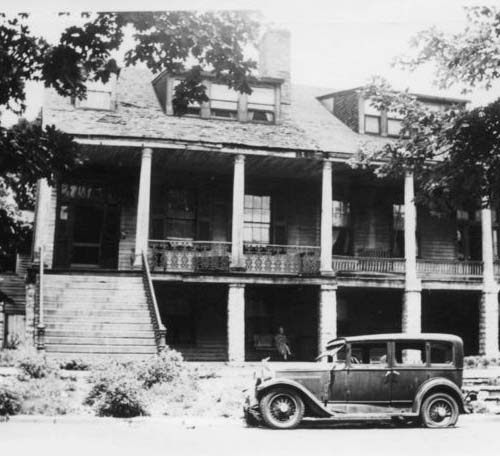 |

| |
|
|  |
Apartment building, 1920s.
Changing the Tire, 1940s.
Studebaker Municipal Vehicles, 1962.
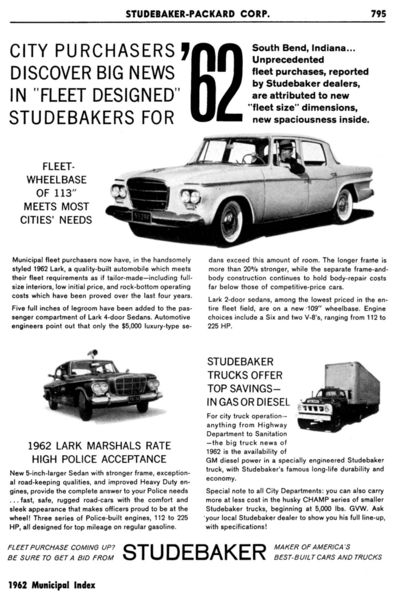 The 1962 Studebaker Lark had all sorts of features that a city would want in a fleet vehicle: the compact Lark was redesigned for 1962, with a 5" longer frame and a 109" wheelbase, and their "police-built" engines came in 112 and 225HP versions on 'regular' gasoline. Studebakers had been operating as police cars for several years before, but a larger, more robust machine was hoped to increase their scope. Sadly, just a couple years later, the Studebaker was gone in the U.S. after 1966. Labels: 1960s, 1962, automobilia, studebaker
Car Parked In The Snow, 1930s
Red Crown Pump Shield, 1940s
Travelling By Corvair
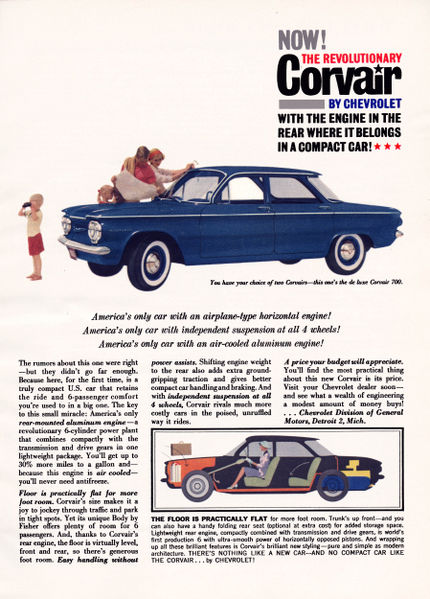 America's only car with an airplane-type horizontal engine!America's only car with an independent suspension at all 4 wheels!America's only car with an air-cooled aluminum engine!This ad for Chevrolet's Corvair America's only car with an airplane-type horizontal engine!America's only car with an independent suspension at all 4 wheels!America's only car with an air-cooled aluminum engine!This ad for Chevrolet's Corvair from 1959 shows just how advanced the little car was -- largely inspired by the Volkswagen, the Corvair put an ample air-cooled engine inside a compact body (although a bit larger than a VW), and championed it as the low-cost car of the future. Compare to the Corvair's contemporaries of the late 1950s: big steel behemoths with cast-iron monstrous engines up front where they belong. The Corvair's competition was almost entirely European imports like the VW, Volvo, and Porche, so Chevrolet was carving a new market for their vehicles, feeding American steel to the customers in need of a good 'ol American machine, and something small and efficient for people looking for something more manageable. The Corvair, as Mr. Nader will gladly tell you, was a victim of its advanced design -- that fancy suspension in the ad was prone to causing catastrophic accidents, and the rear-weighty engine location caused steering issues for drivers. Deaths, sadly, result in distrust for the new technology, and despite a much-too-late redesign with the '64 models by '69 the car was done. Rear-engines in American cars never really went far; the Corvair was one of the last, although Pontiac (who had also tried a rear-engine with their Polaris prototype) went with a mid-engine in the Fiero, and Pontiac's ex-designer John DeLorean put a rear engine in his DMC 12. Labels: 1950s, 1959, advertisement, automobilia, chevrolet, corvair
Changing A Model T Tube
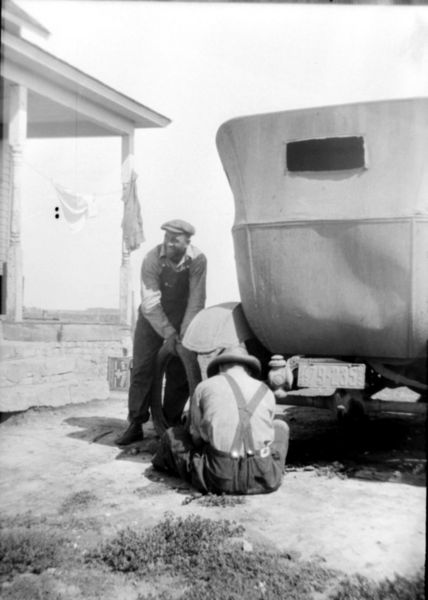 What we see here What we see here is the hindquarters of a mid-1920s Model T Sedan. The first clue is the license plate, issued in 1927, but the dented-up body would indicate that the car isn't right off the showroom floor. Aside from the year, it's pretty clearly the Ford T Sedan: the fabric top, the under-scooping back end, the fenders all echo the Model Ts of the day. In the 1920s, you had to pull the tire off the rim on a regular basis, for the same reason modern bicyclists are skilled at the same task. Car tires of the day had an inner tube, which had a habit of bursting from time to time. It was far more common in the cars than in bicycles, as the Ts covered more land, were heavier, and hit things at faster speeds than a bike. Travelers without a spare tube were in for a tough time. When you're on a cow-trail road, five miles from anywhere, no phone, no nothing, you had to fend for yourself. These guys were in luck: they were close to a house, and probably the advantage of a full toolkit from the farm's shop. They both also look familiar with the process, and probably had it done lickety-split. A sidenote on the Model T itself: As these photos are from Western Minnesota, this car was probably assembled, by hand, at the Ford Manufacturing Plant in Fargo, North Dakota. In the 1910s, Ford's expanding influence meant that they could no longer economically manufacture cars in Detroit and ship them by rail -- assembly plants were built all around the nation 1914, building cars for their local region. Fargo's opened in 1914 and was going full-steam by the time the car above was sent out into the Red River Valley's prairie farmland. Labels: 1920s, 1927, auto repair, automobilia, ford, inner tube, model t
4H IH Scout
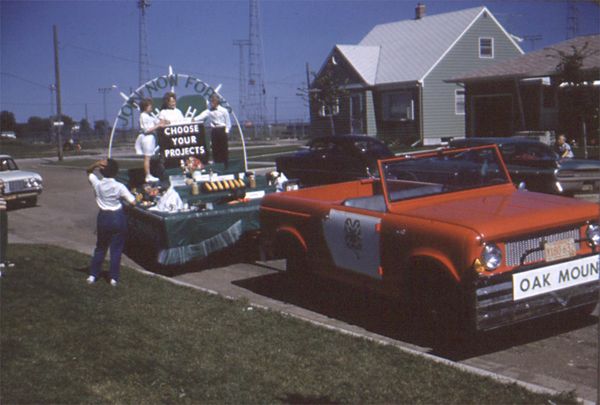 The float aside, that bright red truck is the focus here (also seen here, and here) The owner of this truck was a forward thinker: the shiny, new truck seen here was from the first year International Harvester made the Scout, its answer to the Jeep. At the time, tractor manufacturers weren't specifically tractor manufacturers: they made all kinds of motorized stuff beneficial to farmers. IH saw a need for a heavy-duty farm vehicle that Willis' Jeep was fulfilling, and came up with the Scout. Ford eventually followed with its Bronco, but the gas-conservation of the 70s mostly killed off these smaller versions of what we'd call an SUV. You may not know, but IH made the Scout until 1980: that's almost 20 years on the road. Labels: 1960s, 1961, 4h, automobilia, ih, international harvester, scout
18 Miles To Norfolk
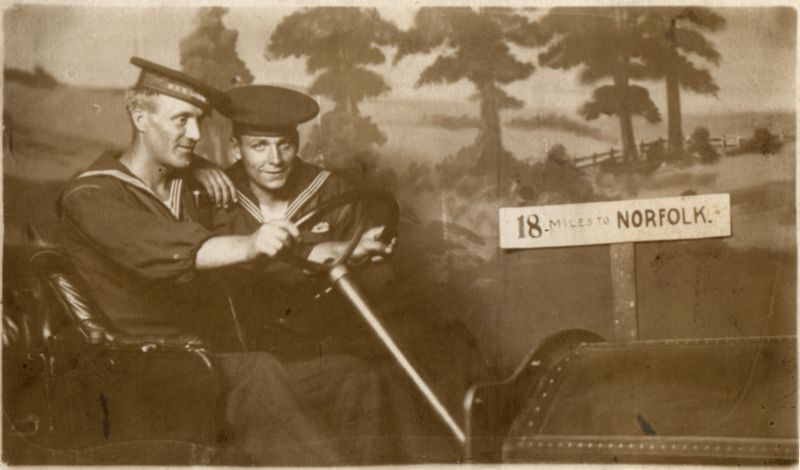 We're going to Norfolk! My guess is that these sailors were on the way to Norfolk Naval Base in Virginia, ready to work on the steel-clad steamships that dominated the US Navy in the earliest parts of the 20th century. Given the style of car and the uniforms, Norfolk was probably a short stop: World War I was probably the ultimate destination for these lads. Labels: antique photo, automobilia, military
Stay At The Auto-House
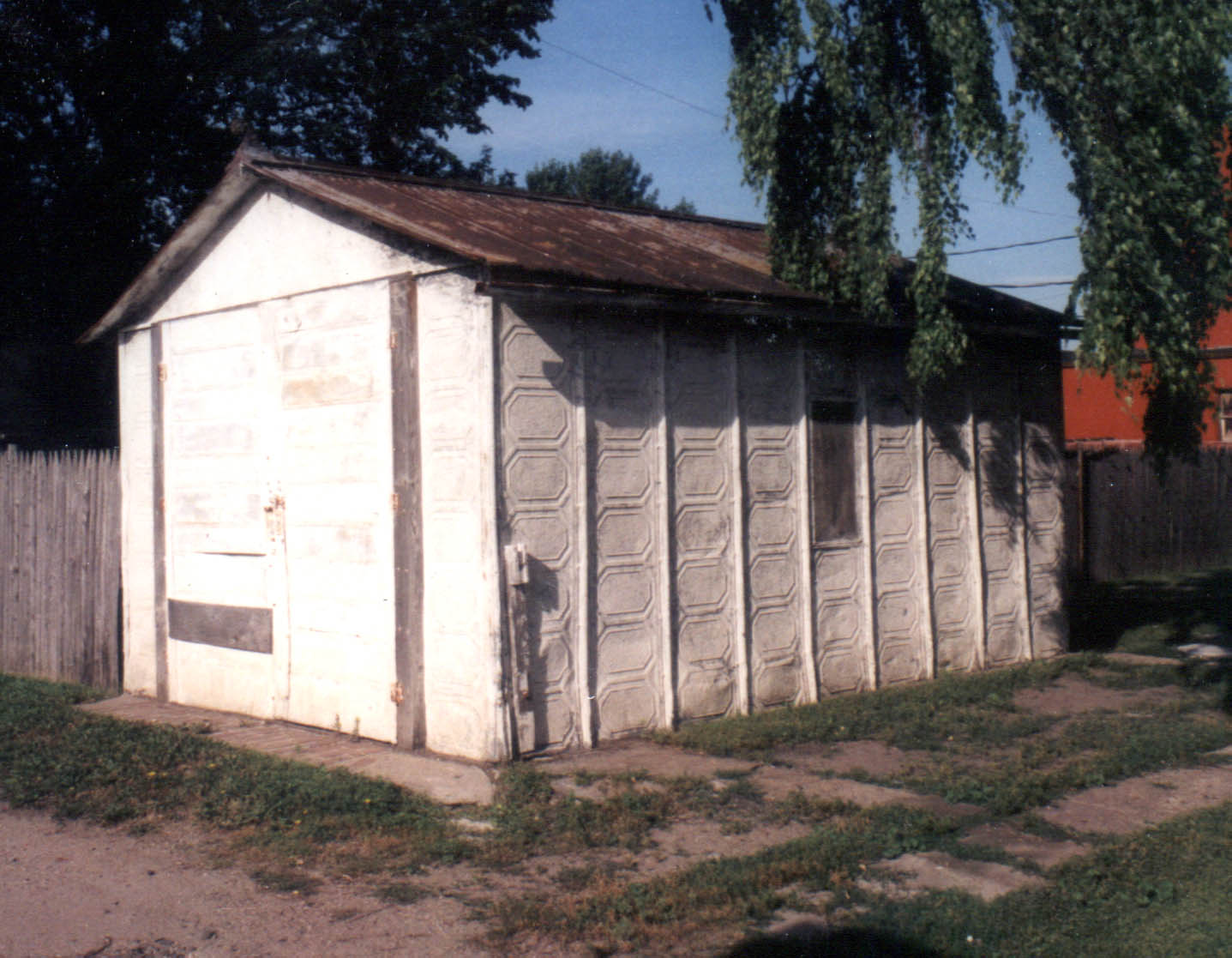 This funny little tin house is a throwback to an earlier time -- one before houses were automatically assigned a wide-open, roofed, cement-floored siamese twin known as a 'garage'. When people started buying cars they needed someplace to put them, and one of the competitors in the 'automobile storage kit' was the Rusk Auto-House, an overtly-fancy steel shed that owes its beauty to its Fargo-based manufacturer: a producer of embossed tin ceilings and copper cornices. Sadly, the metal shortages of the World Wars put an end to tin ceilings, copper cornices, and, as you might guess, stylish little steel car-homes. Labels: antique buildings, automobilia, fargo, historical buildings, north dakota, rusk auto-house
|  |
|
|
